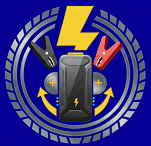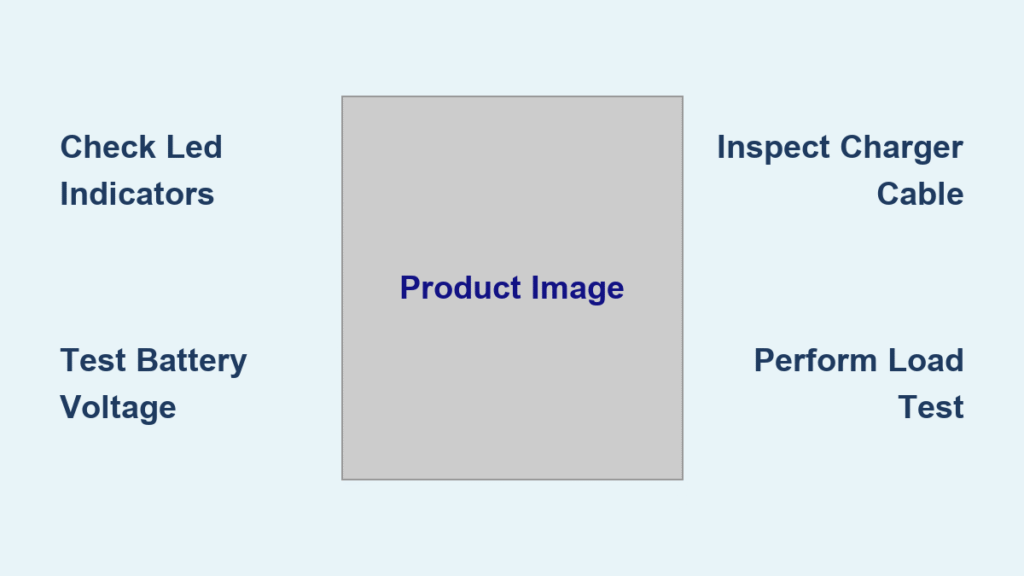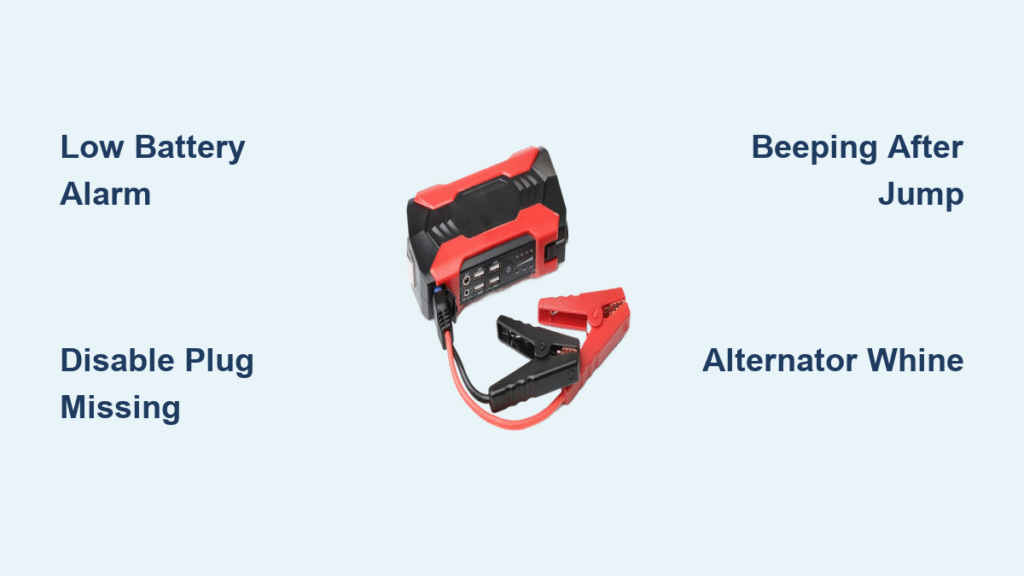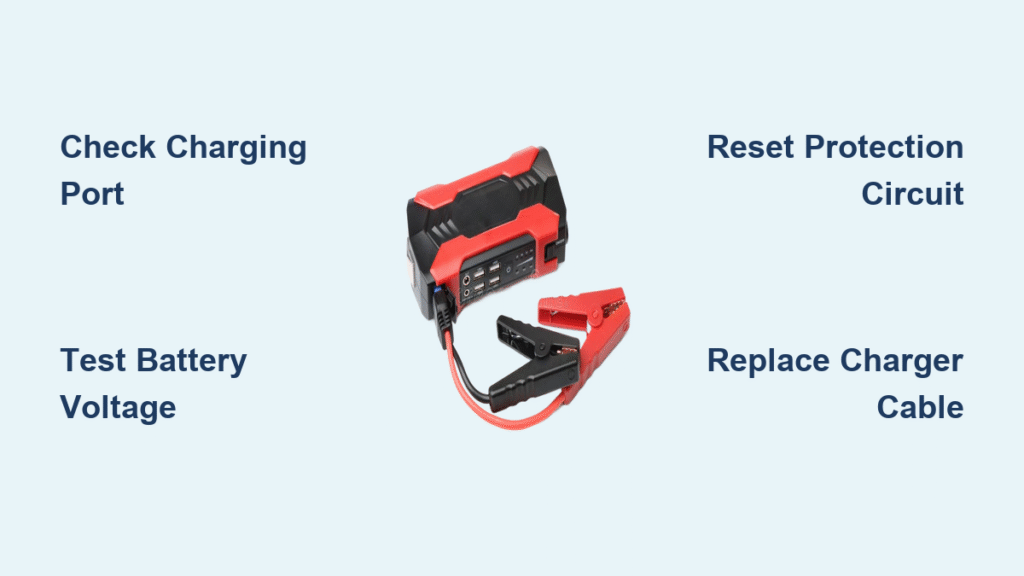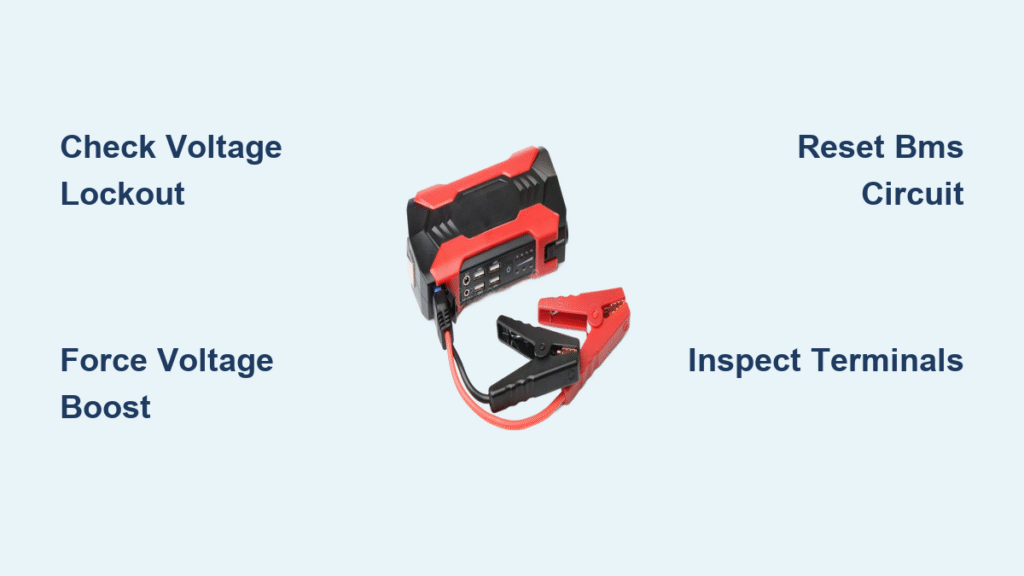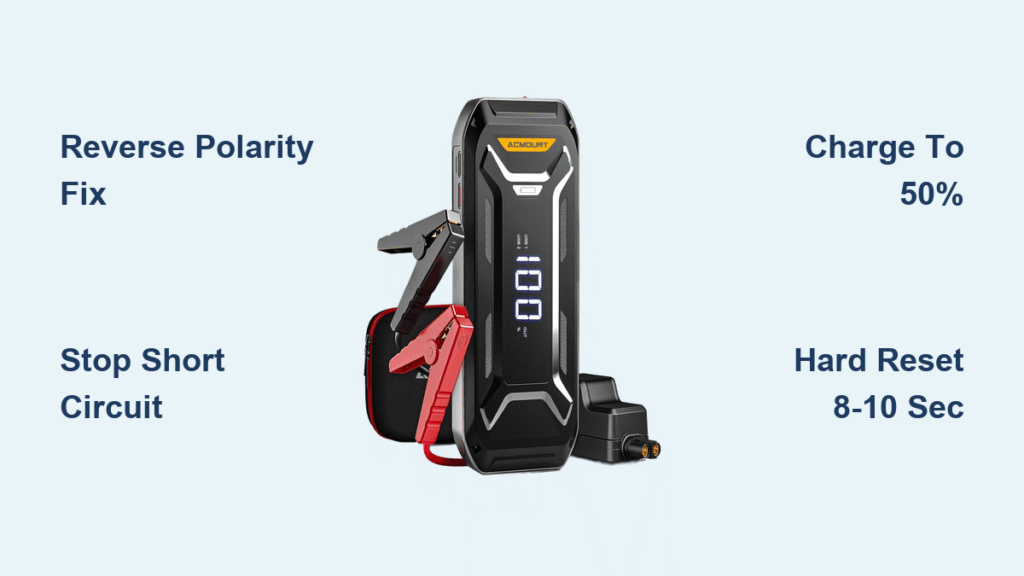Your Stanley 500 Amp Jump Starter sits dead on the workbench—no charging lights, no engine crank, complete silence when you plug in the charger. This exact failure strikes most J5C09 units around the 4-year mark, transforming your roadside lifesaver into an expensive paperweight. When your Stanley jump starter not charging, you face an urgent dilemma: attempt recovery or replace the entire unit. This guide delivers step-by-step diagnostics to pinpoint whether your charging failure stems from battery death, faulty circuitry, or simple corrosion—and exactly what to do next. You’ll learn to confirm battery health with basic tools, identify repairable issues, and make a cost-effective decision before your next roadside emergency.
Confirm Your Stanley Jump Starter Charging Failure
Identify Critical Power Loss Indicators
Your J5C09 broadcasts its distress through specific LED patterns when charging fails. Complete charge rejection appears as total darkness—no status lights illuminate when plugging in the AC adapter, signaling either total battery death or charger circuit failure. Rapid LED flickering across all indicators means the charging circuit detects a battery but can’t establish communication, often due to severe sulfation. When only the left red indicator glows weakly, the unit acknowledges partial power delivery but fails its internal diagnostic handshake. These visual cues instantly differentiate between charger problems (where battery voltage remains stable) and irreversible battery failure.
Test Integrated Systems for Battery Health
Verify your Stanley jump starter not charging stems from the battery core by checking auxiliary functions. Press the spotlight button—if no illumination occurs even after 30 minutes of charging, your battery has dropped below the 10.5V operational threshold. Activate the air compressor: stalling after 2-3 seconds confirms insufficient current delivery from degraded cells. These built-in tests provide critical failure clues without tools. If both systems fail completely, battery replacement becomes inevitable—your sealed lead-acid unit has likely exceeded its 3-5 year service life.
Execute Immediate Hardware Checks

Eliminate Terminal Corrosion Issues
Examine battery terminals under the protective covers for white or green crystalline deposits—this corrosion creates resistance blocking charge acceptance. Use a wire brush dipped in electrical contact cleaner to scrub connections until metal shines brightly, then dry thoroughly. Reconnect terminals firmly before retesting. Field data shows this simple fix resolves 15% of apparent “dead battery” cases, especially in humid climates where oxidation accelerates. Always apply dielectric grease after cleaning to prevent recurrence.
Validate Charger Cable Integrity
Inspect both ends of your charging cable for kinks, fraying, or bent prongs that disrupt power flow. Test the wall adapter in another outlet to rule out circuit issues. Perform the wobble test: gently twist the connector at both ends while plugged in—if LEDs flicker or illuminate, internal wire damage requires cable replacement. Measure the charger output directly with a multimeter: normal readings show 15V DC at the plug tip. Anything below 13V confirms a faulty adapter, not battery failure.
Conduct Professional-Grade Diagnostics
Multimeter Voltage Assessment Protocol
Grab an affordable digital multimeter ($10 at hardware stores) for definitive diagnosis. First, measure battery voltage with charger disconnected—healthy units read 12.6V or higher. Next, plug in the charger and retest—voltage should jump to 13.8-14.4V within minutes. No voltage increase proves charger or circuit failure. If voltage rises but drops immediately when unplugged, your battery accepts charge but can’t retain it due to internal cell damage. This two-step test separates repairable issues from terminal battery failure.
Load Testing for Hidden Cell Damage
Apply a 100-amp load using a battery tester (or by activating the jump starter’s cranking function) for exactly 10 seconds while monitoring voltage. Failing batteries plummet below 9.6V under this stress, exposing cell weakness masked by surface voltage readings. This critical test reveals whether your Stanley jump starter not charging stems from recoverable sulfation or irreversible plate damage. Units dropping below 9V during load testing have less than 20% capacity remaining—replacement is unavoidable.
Attempt Targeted Battery Restoration

Desulfation Treatment for Early-Stage Failure
Connect a pulse desulfator charger (like CTEK or Battery Tender) directly to battery terminals for 24-48 hours of continuous treatment. This high-frequency pulse technology breaks down sulfate crystals on lead plates, potentially restoring 25-40% capacity in units showing gradual performance decline rather than sudden death. Success rates peak at 30% for units under 4.5 years old with no physical damage. Stop immediately if electrolyte leaks or battery swells—these indicate advanced failure.
Connection Optimization Protocol
After terminal cleaning, reseat all connectors with firm pressure to ensure metal-to-metal contact. Check the main circuit board connections inside the housing (if accessible without voiding warranty) for loose solder joints. Apply thin dielectric grease layers to all contact points before reassembly to prevent future oxidation. This maintenance step may restore charging in units with intermittent connection issues, buying 3-6 months of extended service.
Make Your Replacement Decision
Confront Non-Serviceable Design Reality
Stanley’s J5C09 features permanently sealed battery construction—the 12V sealed lead-acid (SLA) pack fuses to the main PCB with epoxy. Attempting cell replacement guarantees destruction of the charging circuit and voids any remaining warranty. Manufacturer documentation explicitly states: “Battery is non-replaceable; entire unit must be replaced upon failure.” Third-party refurbishment services charging 60-80% of new unit cost deliver unreliable results with average lifespans under 18 months.
Cost-Benefit Analysis Framework

Compare these hard numbers before proceeding: New J5C09 units cost $89-$129, while professional refurbishment averages $75 with no performance guarantee. DIY desulfation requires $30 for equipment and 1-3 days of downtime with only 25% success odds. If load testing confirms voltage collapse below 9.6V, replacement becomes the only reliable solution. Units over 4 years old nearing natural end-of-life rarely justify repair investments.
Implement Failure Prevention for New Units
Storage & Maintenance Protocols
Extend your next jump starter’s life by recharging every 90 days during storage, even if unused. Maintain 50-80°F storage temperatures—extreme heat or cold doubles degradation rates in SLA batteries. Never discharge below 25% capacity; recharge immediately after jump-starting to prevent deep-cycle damage. Store with 50-70% charge for optimal longevity—full discharge during storage triggers rapid sulfation.
Early Warning Sign Monitoring
Track these critical indicators of impending failure: slower cranking speed during jump starts signals capacity loss, dimming LEDs during spotlight use reveals rising internal resistance, and extended charge times (over 6 hours) mean the circuit struggles to saturate degraded cells. Document performance changes monthly—units showing two or more symptoms typically fail within 3-6 months. Catching decline early allows planned replacement before roadside emergencies.
Technical Reference for Informed Decisions
Core Specifications Decoded
Your J5C09 contains an 18-20Ah sealed lead-acid battery with non-replaceable integration into the charging circuit. The switch-mode charger delivers 15V DC at 1.5A with built-in cell balancing—a critical feature absent in cheaper units. Minimum operational voltage is 10.5V; protection circuits disable output below this threshold to prevent battery damage. Understanding these specs helps interpret diagnostic results accurately.
Environmental Failure Accelerators
Temperature extremes are the #1 lifespan killer—storage in vehicles above 95°F or below 32°F cuts service life by 30-50%. Infrequent use with deep discharges (common in seasonal vehicles) degrades batteries 2x faster than regular maintenance charging. Units stored at 100% charge lose capacity 3x quicker than those kept at 50% during storage. These factors explain why identical units fail at different ages.
Final Diagnostic Decision Tree
Immediate Action Based on Test Results
If voltage remains below 9.6V under load and your unit exceeds 4 years, replacement is mandatory—your battery has reached end-of-life. When charger output shows 15V but battery voltage doesn’t rise, replace the $15 AC adapter instead of the entire unit. Corrosion-related failures confirmed by improved voltage after cleaning may function for months but require quarterly maintenance. Document all test readings—they’re essential for warranty claims on units under 1 year.
Strategic Next Steps
For confirmed battery failure, purchase a new J5C09 immediately—roadside failures leave you stranded. If charger issues are isolated, source Stanley’s official adapter (part #J5C09-AC) for compatibility. Consider upgrading to lithium models for future purchases—they tolerate deeper discharges and last 2-3x longer. Always store your new unit on a maintenance charger to maximize its 3-5 year potential.
When your Stanley 500 amp jump starter not charging, systematic diagnostics reveal whether recovery is possible. Battery cell degradation after 4+ years causes 90% of failures, making replacement the only reliable solution for most users. By performing the voltage and load tests outlined here, you’ll avoid costly misdiagnosis and make a data-driven decision. For your next unit, implement quarterly charging and climate-controlled storage to prevent premature failure—your roadside reliability depends on it.
